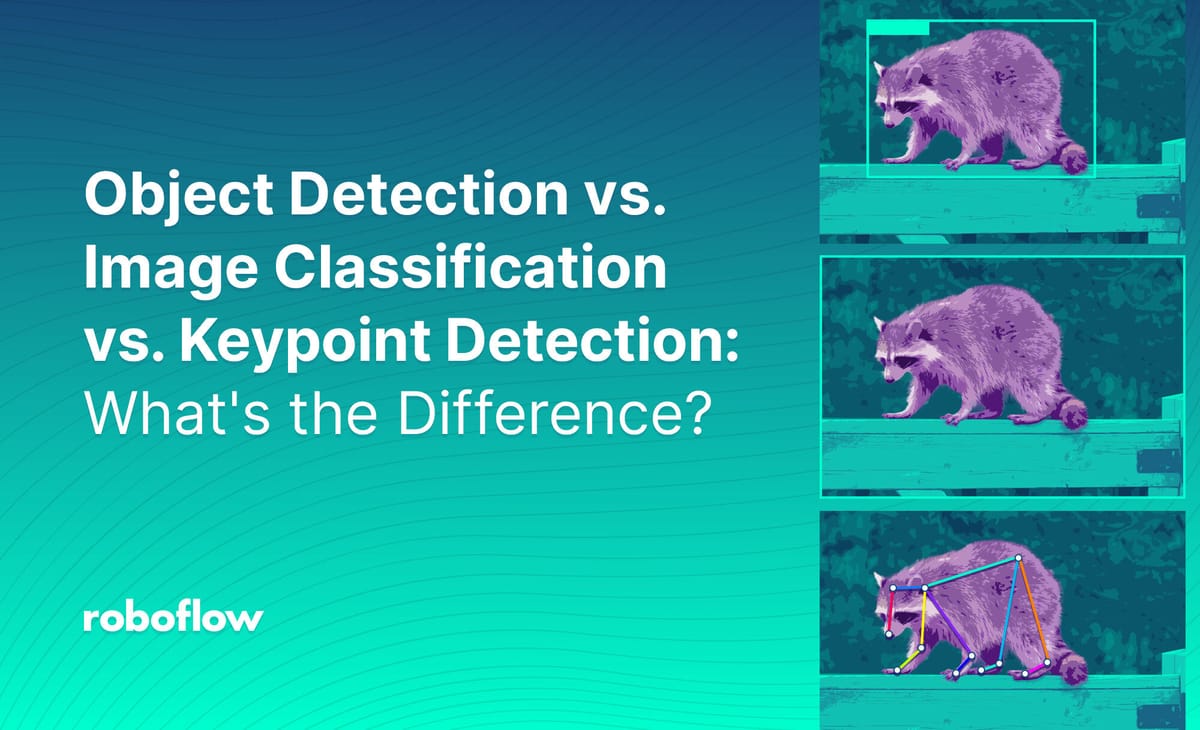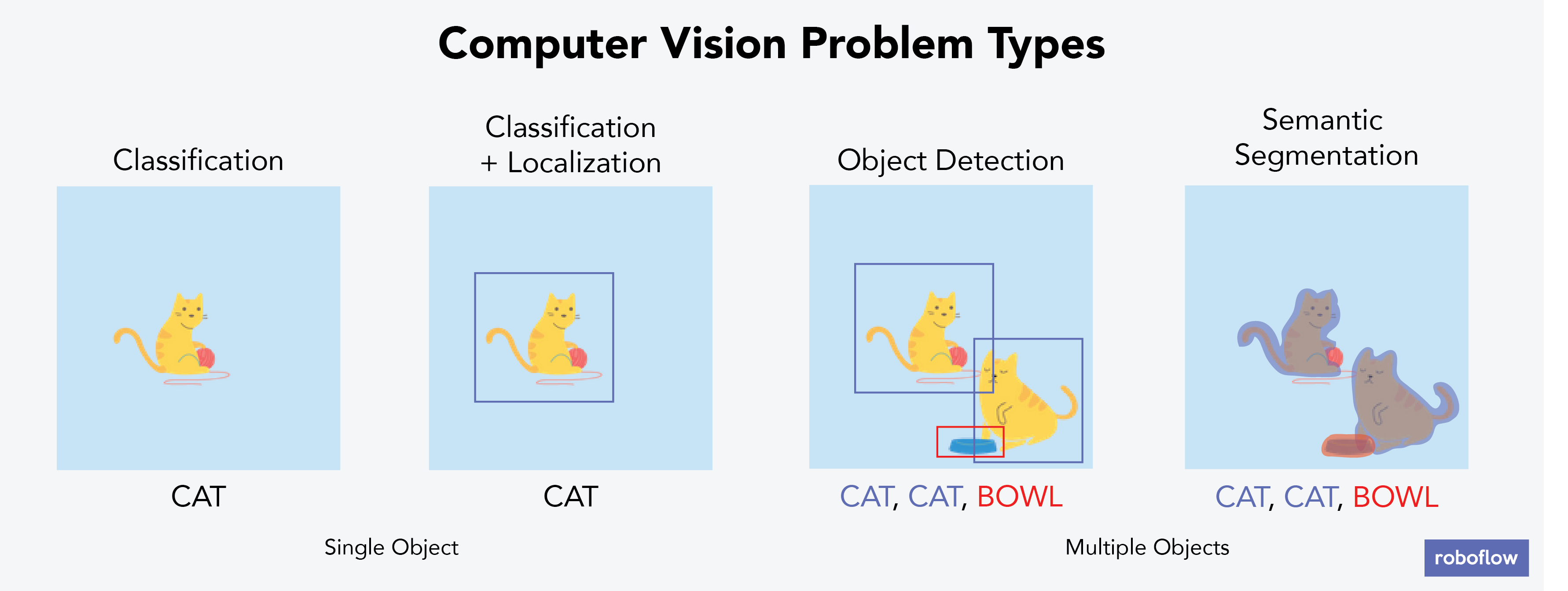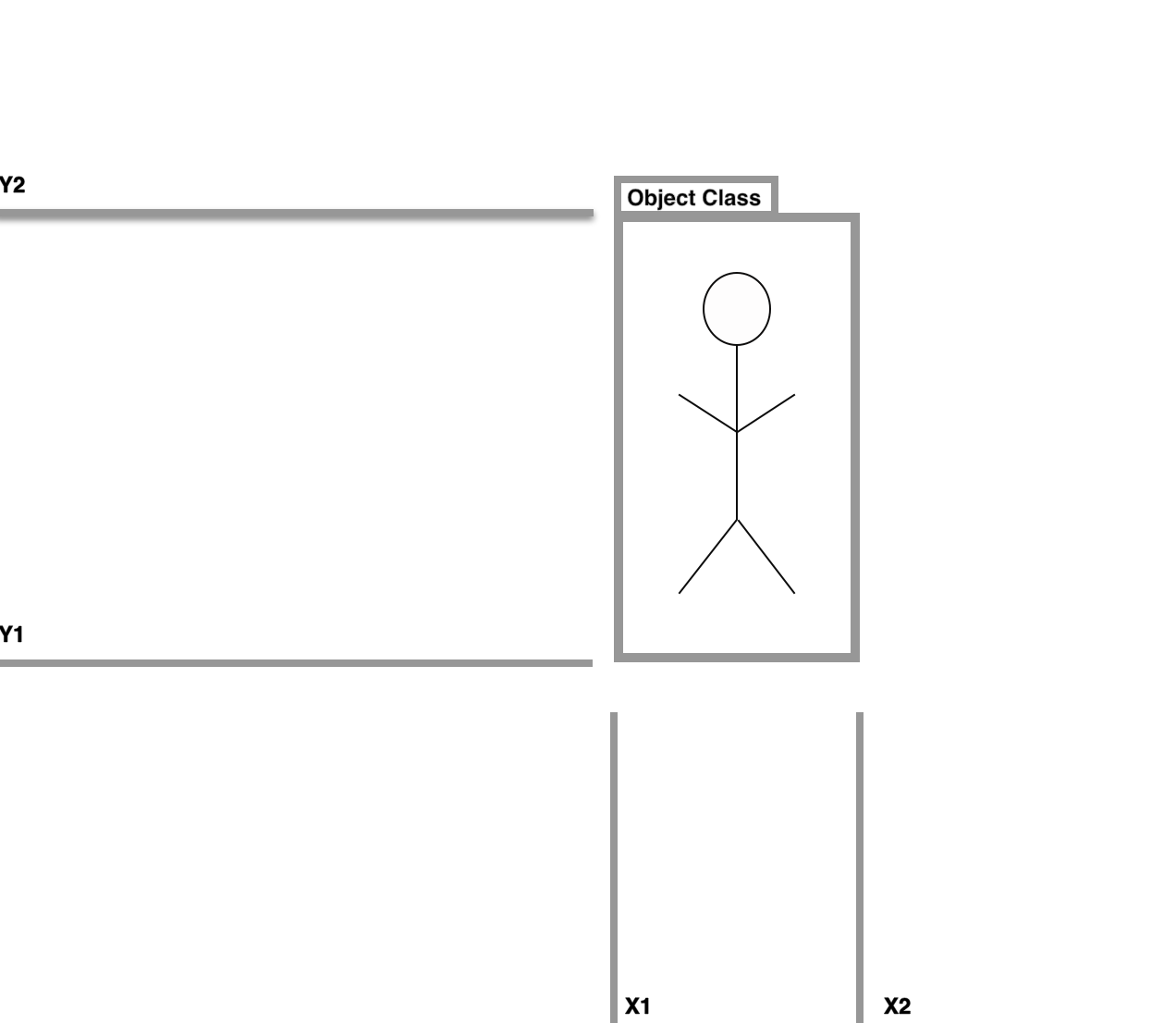
Computer vision is a diverse field of artificial intelligence that aims to detect and identify the contents of an image or a video. One of the common questions that most people starting their journey in the field of computer vision have is: what is the difference between object detection, image classification, and keypoint detection?
In today's modern era, computer vision technology like object detection, image classification, and key point detection can be used to measure distance in photos and videos, plot points of interest from drone footage, send Twilio notifications, and many more use cases.

The emerging future of various computer vision techniques makes it indispensable to break down these terminologies to assist you in comprehending the difference between them and knowing when to use them in practice.
Computer vision techniques are employed in industries for purposes such as counting crops in agriculture to identifying defects in manufacturing processes.
Today's blog will help you understand object detection and its workings, a gentle introduction to image classification, its various types, and everything you need to know about keypoint detection. We will also compare the three terminologies and see which one to use in what situation.
Let's begin!
What is Object Detection?
Object detection is a computer vision and image processing technology that identifies an instances of an object in digital images and videos. For example, an object detection program could find instances of screws on a factory floor, or saw blades on a table next to a workstation.
Let's talk more about this. In the following video, we review what object detection is in one minute:
Object detection algorithms allow us to identify and locate the object in an image by leveraging various machine learning and deep learning tools. They are widely used for classifying the types of things found, counting objects in a scene, accurately labeling them, and tracking their precise location.

Many object detection algorithms use popular deep learning-based approaches like convolutional neural networks (CNNs), R-CNN, and YOLO. Whereas in traditional machine learning-based approaches, we start by identifying edges and contours by looking at various features of an image and then group the pixels that may belong to an object.
Label and Annotate Data with Roboflow for free
Use Roboflow to manage datasets, label data, and convert to 26+ formats for using different models. Roboflow is free up to 10,000 images, cloud-based, and easy for teams.
In contrast, CNN's don't need any features to be defined or extracted separately. They learn the features of the objects of interest.
Object Detection Applications
Object detection models have a range of use cases across industries. Consider these examples:
- Agriculture: Object detection models can count crops, monitor for damaged crops, and identify animals on a field.
- Security: Detect people entering or existing a building or detect the presence of weapons.
- Medical: Used for detecting tumors, cancer cells, lesions, reading x-rays
- Autonomous Driving: Used for detecting sign boards, traffic signals, pedestrians, crosswalks, and cars.
If you are interested in using object detection to Trigger Automated Email Alerts, check out our post that covers this topic.
What is Image Classification?
Image classification is a topic of pattern recognition in computer vision that allows us to categorize and label groups of pixels or vectors by analyzing a digital image.
The underlying task is to identify the features occurring in an image in terms of the object and assign a label or a class to an entire image. Early image classification models relied on raw pixel data and restricted the task of image classification to only single class.

In contrast, AI-based deep learning models can now identify and recognize various criteria as well as apply multi-label classification. There are mainly two types of image classification models, and they are unsupervised and supervised:
- Unsupervised Image Classification: Each image in a dataset is identified into clusters (inherent categories) based on their properties without using labeled training data samples.
- Supervised Image Classification: It is a human-guided classification where we select representative samples for each land cover class and then direct the image classification software to use these training sites as a reference for the classification and apply them to the entire image.
Explaining unsupervised and supervised learning
Image Classification Applications
Image classification forms the foundation for other computer vision problems. It is widely used in:
- Medical imaging: pneumonia detection, fractures, mass detection
- Content moderation: personally identifiable information, age restricted content, content categorization, visual search
- Satellite imagery: wildfire detection, crop health, infrastructure identification
- Machine vision: safety hazards, quality inspection, gauge monitoring
Keypoint Detection and Use-Cases
Keypoint detection is a popular computer vision technique for locating key object parts in an image. It defines spatial locations or points that stand out in an image, like key parts of our faces (nose tip, eyebrow, lips) or key points of our body (joints, hips, elbow). Keypoint detection aims to represent the underlying object in a feature-rich manner.

State-of-the-art keypoint detection models can extract powerful 3D features from an image and are considered an important source when learning 3D geometries. With these models, you can get the 3D structure of particular objects, assisting you in locating the key points from a given image.
Keypoint Detection Applications
Keypoint detection is getting immensely popular due to its abundance of use cases in the artificial intelligence field. Some of the popular areas where 3D keypoint detection is being used are:
- Human pose estimation
- Object pose estimation
- Face recognition and matching
- Fashion landmark detection
- Facial emotion recognition
- Human-robot interaction
Object Detection vs Image Classification vs Keypoint Detection Comparison
Let's talk about how object detection, image classification, and keypoint detection compare.
Differences between Object Detection, Image Classification, and Keypoint Detection
In this post, we learned the difference between object detection, image classification and keypoint detection.
Specifically, you learned:
- Object detection, how it works, and where object detection is used in industry.
- Importance of image classification in computer vision, its applications and two types of image classification: supervised and unsupervised.
- How keypoint detection is widely used for human pose and activity detection and the prospects of 3D keypoint detection.
- Comparison of different algorithms, applications and datasets for all three computer vision technologies.
Now, you will be able to identify the critical aspects of object detection, image classification and keypoint detection and will be able to apply them in your next project successfully.
To get started on projects related to these topics, you can use any of the 100,000+ open source datasets from Roboflow Universe.
Cite this Post
Use the following entry to cite this post in your research:
Mrinal W.. (Sep 28, 2022). Object Detection vs. Image Classification vs. Keypoint Detection. Roboflow Blog: https://blog.roboflow.com/object-detection-vs-image-classification-vs-keypoint-detection/
